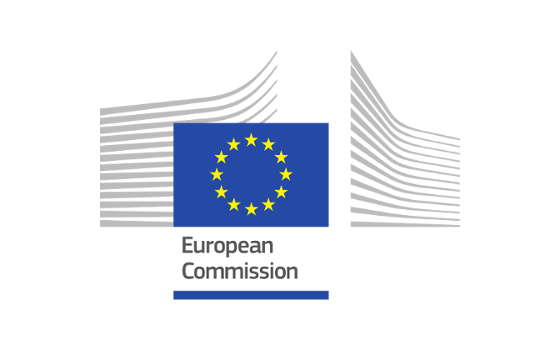
- In May 2017, a new Regulation on medical devices, Regulation (EU) 2017/745 entered into force that will come into effect in spring 2020. This new Regulation sets forth reinforced rules for the generation of clinical evidence: for instance, clinical investigations for high-risk devices will be compulsory and the requirements regarding the clinical evaluation throughout the product lifetime are more stringent.
- Medical devices have particularities that make the conduct of clinical investigations difficult. Taking into account these particularities, there is a need for methodologies that enable to generate improved clinical evidence. New developments in medical technologies such as mHealth, artificial intelligence, and combination products, pose additional challenges and opportunities for developers[5] to generate high-quality clinical evidence.
- Owing to rapid scientific progress and lack of knowledge on the regulatory frameworks among the scientific community, there is a need to raise awareness on new regulatory requirements in terms of clinical evidence. It is important to ensure a smooth transition from the former directive to the new regulatory framework, especially with regard to clinical evidence, by informing stakeholders involved in the clinical evaluation of high-risk medical devices (e.g. academic researchers, clinicians, manufacturers, notified bodies, contract research organisations).
These challenges can be addressed by developing and promoting methodological approaches, including alternative statistical methodologies, adapted to the specificities of high-risk medical devices. These methodological approaches will improve the robustness of clinical data needed at different phases of the product's lifetime, such as conformity assessment, post-market clinical follow-up, continuous clinical evaluation, post-market surveillance, and potentially relative effectiveness assessment.
To address these challenges, the proposals should focus on i) methods to generate clinical data both within the context of a clinical investigation and in daily practice (i.e. real-world data) so that robust clinical evidence is available for high-risk medical devices, and ii) aggregation methods that will allow to make optimal use of all available data taking into account its heterogeneity (e.g. meta-analysis methods using different statistical approaches, methods to combine data from different types of sources) and iii) promote exchange of best-practices and support network activities among developers. Proposals should in particular:
- Analyse the particularities of high-risk medical devices and the potential resulting problems with regard to clinical evaluation, carry out a review of the currently used clinical investigation designs for the evaluation of such devices, provide a hierarchy of these approaches, identify gaps to be filled (in particular in view of new developments like e.g. mHealth, artificial intelligence, and combined products) and derive recommendations for the choice of clinical investigation methodology to obtain sufficient evidence.
- Develop methodologies for generating clinical data on high-risk medical devices enabling to collect sound data and to use data from different sources including real-world data. These methodologies should be adapted for the needs of conformity assessment and for continuous clinical evaluation throughout the lifetime of the device. Proposals should take into account the various specificities of high-risk medical devices and therapeutic areas if relevant.
- Contribute to the exchange of best practices among notified bodies with regard to the assessment of clinical data as provided by developers of high-risk medical devices.
- Support networking activities among developers and in particular academic centres with regard to regulatory requirements for assessing high-risk medical devices and foster a pool of scientific expertise on clinical evaluation of high-risk medical devices.
Applicant consortia should bring together partners with relevant expertise from e.g. academia, competent national authorities, centres of expertise for clinical research and care, scientific and medical learned societies. The consortium should also seek input from relevant stakeholders such as technology developers, healthcare providers, health technology assessment agencies and patients, with special regard to endpoints that are relevant for patients. The composition of the consortium should ensure a broad geographical representation of European countries. Sex and gender aspects should be taken into account in carrying out the relevant activities.
Proposals should complement or build on existing work, including results of EU-funded research projects and Joint Actions in the field of medical devices evaluation, and related activities, like e.g. those of the Competent Authorities for Medical Devices (CAMD) and the successor Medical Devices Coordination Group (MDCG).
Proposals could consider the involvement of The European Commission Joint Research Centre (JRC) to provide added value regarding aspects like interfacing among the different stakeholders (e.g. developers and regulatory bodies) or contributing to European and international harmonization. In this respect the JRC is open to collaborate with any successful proposal.
The Commission considers that proposals requesting a contribution from the EU of between EUR 1 and 2 million would allow this specific challenge to be addressed appropriately. Nonetheless, this does not preclude submission and selection of proposals requesting other amount.
Opening date: 04 July 2019
Deadline: 07 April 2020 17:00:00 Brussels time
Deadline Model: single-stage
Type of action: Coordination and Support Action (CSA)
For topic conditions, documents and submission service, please visit:
https://ec.europa.eu/info/funding-tenders/opportunities/portal/screen/opportunities/topic-details/sc1-hco-18-2020
PS: Find your partners or consortia preparing a project proposal
If you need help to identify a potential partner with particular competences, facilities or experience, please join and explore (HEALTH IT) SPACE www.healthitspace.eu.